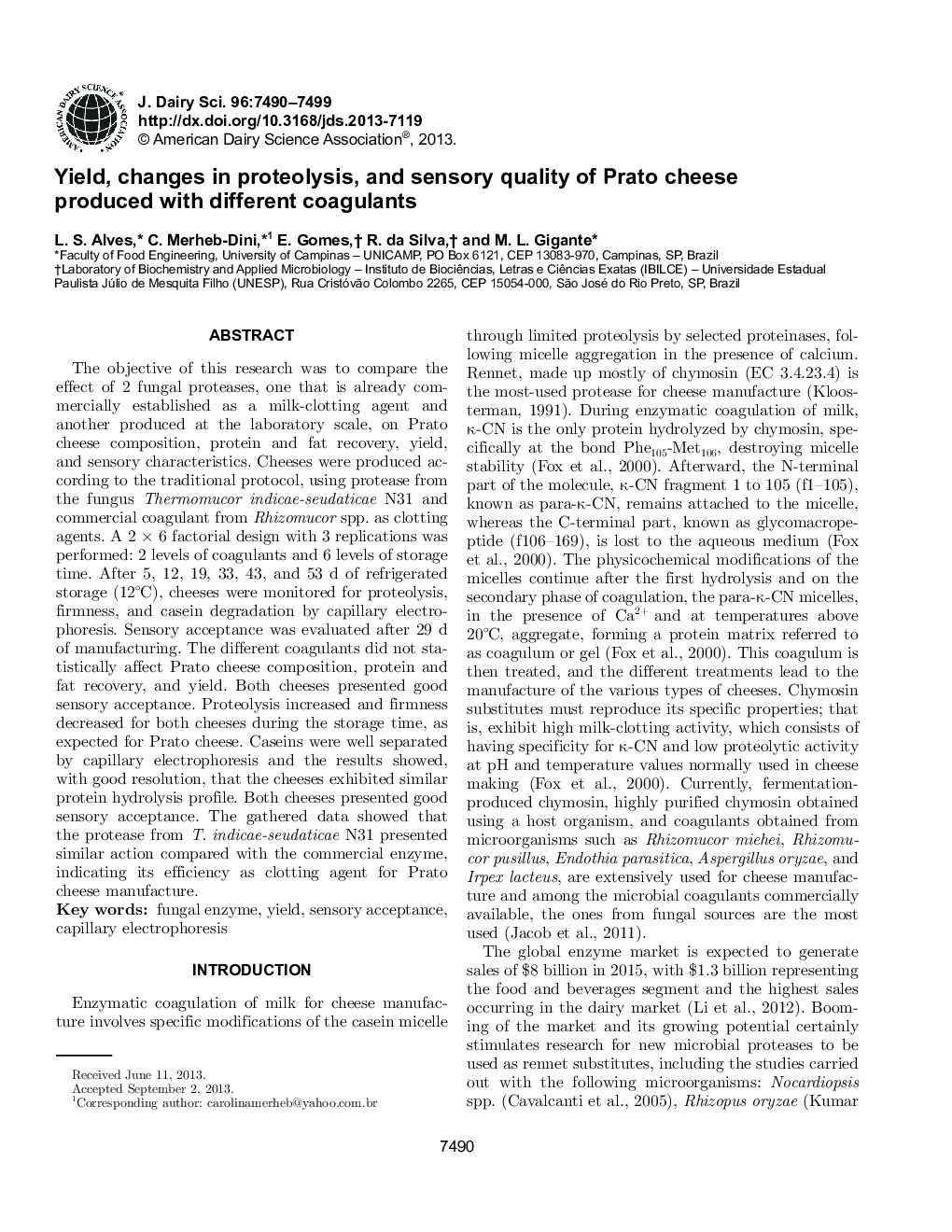| Article ID | Journal | Published Year | Pages | File Type |
|---|---|---|---|---|
| 10977243 | Journal of Dairy Science | 2013 | 10 Pages |
Abstract
The objective of this research was to compare the effect of 2 fungal proteases, one that is already commercially established as a milk-clotting agent and another produced at the laboratory scale, on Prato cheese composition, protein and fat recovery, yield, and sensory characteristics. Cheeses were produced according to the traditional protocol, using protease from the fungus Thermomucor indicae-seudaticae N31 and commercial coagulant from Rhizomucor spp. as clotting agents. A 2 Ã 6 factorial design with 3 replications was performed: 2 levels of coagulants and 6 levels of storage time. After 5, 12, 19, 33, 43, and 53 d of refrigerated storage (12°C), cheeses were monitored for proteolysis, firmness, and casein degradation by capillary electrophoresis. Sensory acceptance was evaluated after 29 d of manufacturing. The different coagulants did not statistically affect Prato cheese composition, protein and fat recovery, and yield. Both cheeses presented good sensory acceptance. Proteolysis increased and firmness decreased for both cheeses during the storage time, as expected for Prato cheese. Caseins were well separated by capillary electrophoresis and the results showed, with good resolution, that the cheeses exhibited similar protein hydrolysis profile. Both cheeses presented good sensory acceptance. The gathered data showed that the protease from T. indicae-seudaticae N31 presented similar action compared with the commercial enzyme, indicating its efficiency as clotting agent for Prato cheese manufacture.
Related Topics
Life Sciences
Agricultural and Biological Sciences
Animal Science and Zoology
Authors
L.S. Alves, C. Merheb-Dini, E. Gomes, R. da Silva, M.L. Gigante,
